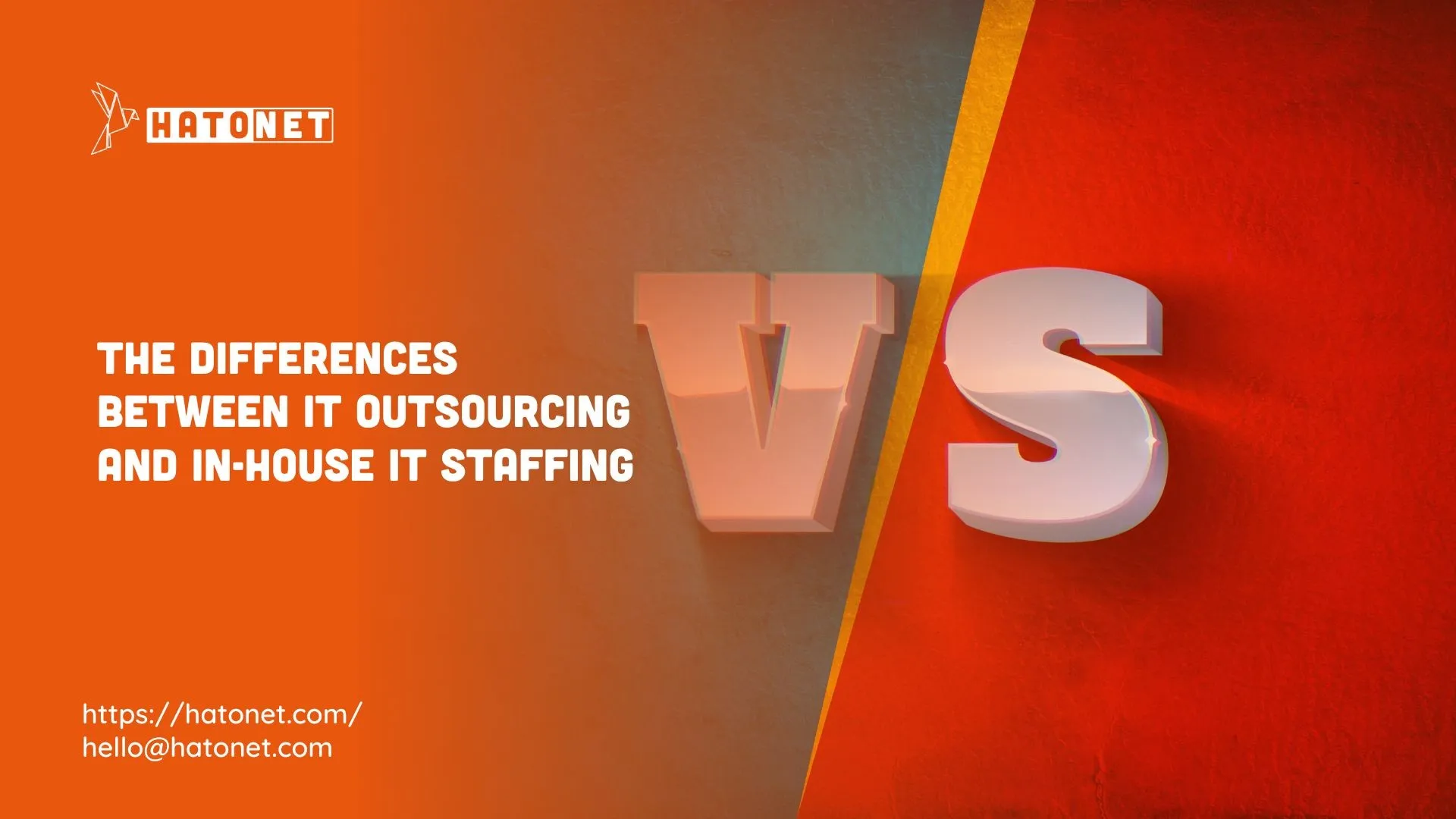Exploring the Differences Between IT Outsourcing and In-house IT Staffing

In the realm of information technology (IT), the choices companies make regarding their workforce can significantly impact their efficiency, flexibility, and competitiveness. IT outsourcing involves delegating specific IT functions or projects to third-party vendors, while in-house IT staffing entails employing IT professionals directly within the organization. Each approach offers unique benefits and drawbacks, which we'll explore in detail.
IT Outsourcing: Leveraging External Expertise
The term "IT outsourcing staff" refers to personnel or employees who are hired by a company or organization to handle IT tasks and responsibilities on behalf of that company, typically through an outsourcing arrangement with a third-party service provider. These staff members are not directly employed by the company itself but work on IT projects, tasks, or support functions as part of the outsourcing agreement. They may be involved in various IT-related activities such as software development, network management, technical support, system administration, and other IT services depending on the specific needs of the organization.
Advantages of IT Outsourcing:
Cost Efficiency: Outsourcing IT tasks can lead to significant cost savings by eliminating the need for full-time salaries, benefits, and overhead costs associated with in-house employees.
Access to Specialized Skills: Outsourcing allows companies to access a global talent pool and engage experts with specialized skills and experience tailored to their project requirements.
Scalability and Flexibility: With outsourcing, organizations can quickly scale resources up or down based on project demands, enabling greater flexibility in resource allocation.
Focus on Core Competencies: By outsourcing non-core IT functions, companies can concentrate on their core business activities, enhancing overall productivity and competitiveness.

Challenges of IT Outsourcing:
Loss of Control: Outsourcing IT functions may result in reduced control over project management, quality assurance, and decision-making processes, as these aspects are often delegated to external vendors.
Communication and Cultural Differences: Language barriers, time zone discrepancies, and cultural differences can pose challenges in communication and collaboration between the organization and outsourcing partners.
Security and Data Privacy Risks: Sharing sensitive data and intellectual property with third-party vendors increases the risk of data breaches, security vulnerabilities, and compliance issues.
But for Vietnam, these problems are no longer difficult, find out why IT Outsourcing Vietnam is a technology outsourcing bright spot in the world.
In-house IT Staffing: Building Internal Capabilities
In-house IT staffing refers to the practice of hiring and employing information technology (IT) professionals directly within a company or organization, rather than outsourcing these roles to third-party service providers. These IT professionals work directly for the company and are typically part of its internal workforce. In-house IT staffing allows the organization to have dedicated personnel who are fully integrated into the company's culture, processes, and goals. They may be responsible for a wide range of IT functions, including software development, network administration, technical support, cybersecurity, data management, and IT strategy planning.
Advantages of In-house IT Staffing:
Greater Control and Oversight: In-house IT staffing provides organizations with direct control over hiring, training, and managing IT professionals, allowing for closer supervision and alignment with business objectives.
Deep Understanding of Organizational Needs: In-house IT staff possess intimate knowledge of the company's infrastructure, operations, and culture, facilitating seamless integration and alignment with organizational goals.
Enhanced Security and Compliance: Maintaining IT functions in-house enables tighter control over data security, regulatory compliance, and adherence to industry standards, minimizing the risk of external threats.
Promotion of Innovation and Collaboration: In-house teams foster a collaborative environment where ideas can be exchanged freely, promoting innovation, creativity, and continuous improvement within the organization.

Challenges of In-house IT Staffing:
Higher Costs and Overhead: Employing full-time IT professionals entails higher costs, including salaries, benefits, training, and infrastructure investments, which can strain the organization's budget.
Limited Access to Specialized Skills: In-house teams may lack the breadth and depth of specialized skills available through outsourcing, particularly for niche technologies or short-term projects.
Risks of Employee Turnover and Burnout: Recruiting and retaining top IT talent can be challenging, and staff turnover or burnout may disrupt projects, impact morale, and increase recruitment costs.
In summary, the choice between IT outsourcing and in-house IT staffing depends on various factors, including the organization's budget, goals, resources, and project requirements. While outsourcing offers cost savings, scalability, and access to specialized expertise, it entails risks such as loss of control and security concerns. Conversely, in-house staffing provides greater control, security, and alignment with organizational goals but may incur higher costs and resource constraints.
Ultimately, organizations must weigh these factors carefully and adopt a strategic approach that aligns with their unique needs and objectives. Whether opting for IT outsourcing, in-house staffing, or a hybrid model combining both approaches, prioritizing collaboration, communication, and innovation is essential for achieving long-term success in today's dynamic IT landscape. By leveraging the strengths of both models while mitigating their respective challenges, businesses can effectively navigate the complexities of IT staffing and drive innovation, growth, and competitiveness in the digital age.
Hatonet kết nối doanh nghiệp ITO toàn cầu.
Giúp các doanh nghiệp IT Việt Nam tiết kiệm chi phí,tìm kiếm
đối tác,mở rộng mạng lưới.
- Mở rộng kênh tìm kiếm khách hàng gia tăng doanh thu.
- Tiết kiệm chi phí quan hệ tìm đối tác.
- Ứng tuyển trực tuyến bất cứ lúc nào khi có yêu cầu.
- Trực tiếp liên kết với công ty quốc tế
Liên hệ :
Email: hello@hatonet.vn
Zalo: https://zalo.me/hatonet

